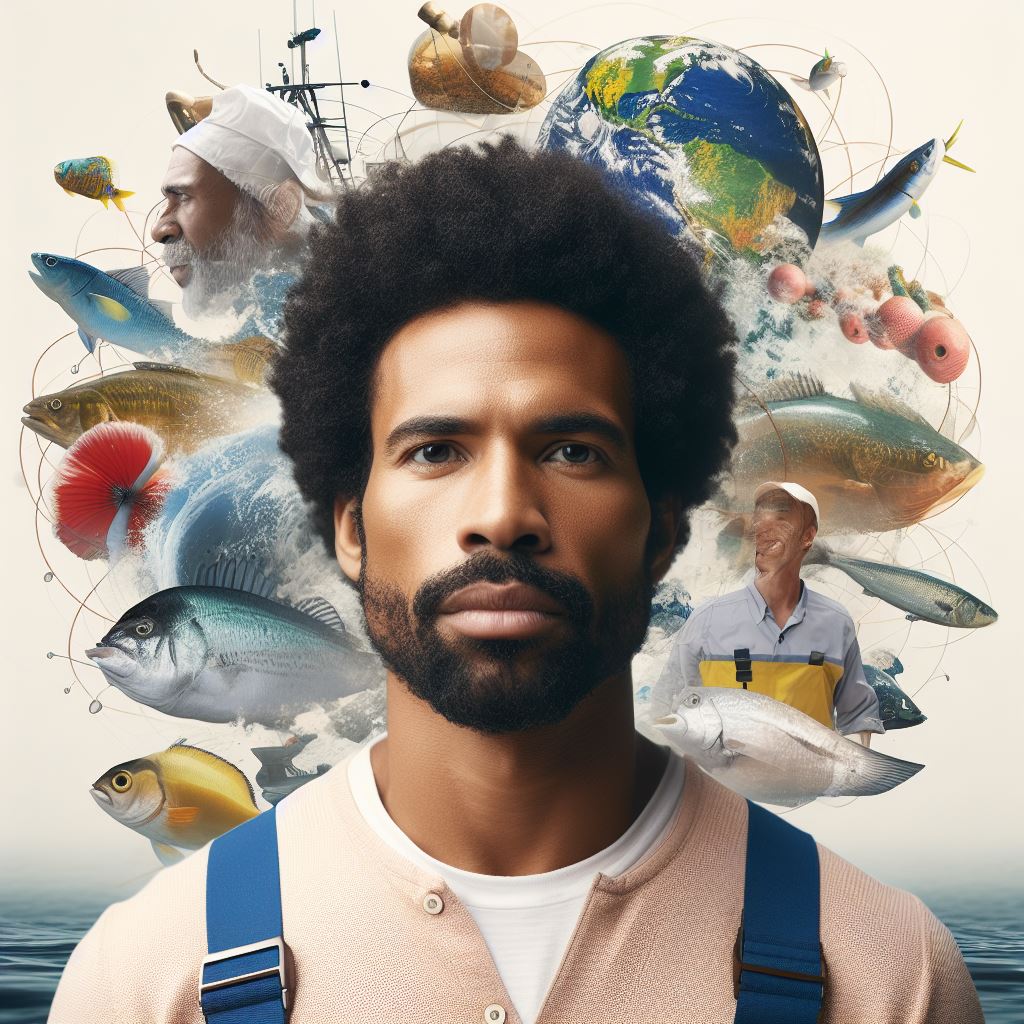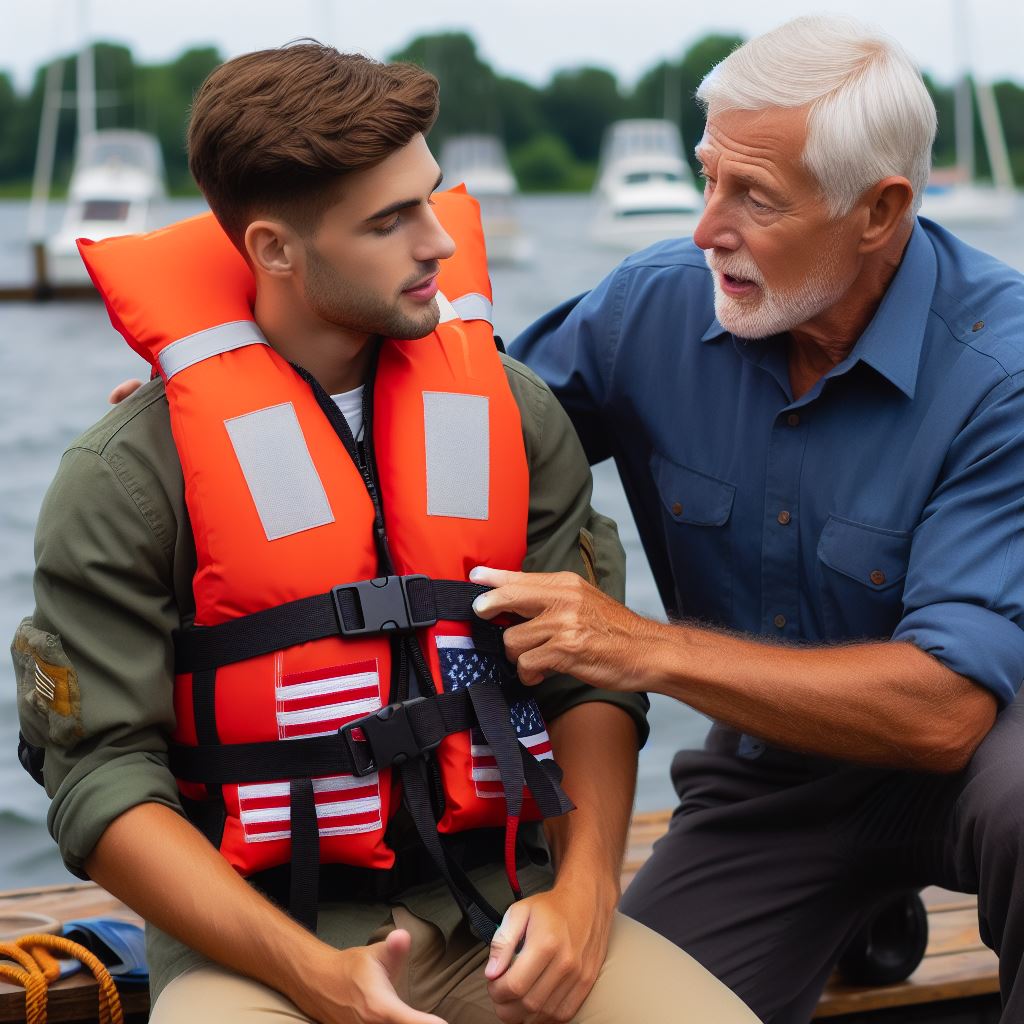Introduction
Climate change is the alteration of weather patterns and ecosystems caused by human activities, leading to various adverse effects.
US fishing grounds are vital resources that support the livelihoods of communities and contribute to the national economy.
In the rhythmic dance between Earth and its climate, the heartbeat of our oceans is changing, and nowhere is this more palpable than in the fishing grounds of the United States.
The impact of climate change on these vital waters is not a distant forecast; it’s a present reality, reshaping the very fabric of marine ecosystems.
In this dynamic theater of nature, where life’s intricate balance has thrived for centuries, rising temperatures, shifting currents, and ocean acidification are orchestrating a profound symphony of transformation.
This blog explores the intricate interplay between climate change and the once-plentiful fishing grounds of the United States, diving deep into the currents of change that are disrupting both the lives of marine species and the livelihoods of those who depend on them.
From the bustling fisheries of the Atlantic to the serene Pacific waters, the impact is reverberating, and understanding these shifts is crucial for charting a course toward a sustainable future.
Join us on this voyage through the tempest of climate change as we navigate its effects on the delicate tapestry of US fishing grounds, seeking insights into the challenges and opportunities that lie beneath the surface.
Current State of US Fishing Grounds
Description of US fishing grounds and their significance:
- The US fishing grounds are vast, stretching along the Atlantic and Pacific coasts.
- These areas provide abundant seafood resources, supporting a thriving fishing industry.
- From Maine to Alaska, the US fishing grounds contribute to the nation’s food security.
- They are highly productive, offering a diverse range of marine habitats and ecosystems.
- The US fishing grounds include exclusive economic zones, where commercial fishing is regulated.
Overview of the types of fish and marine life in these areas
- The US fishing grounds are home to a rich variety of fish species, such as salmon, cod, and tuna.
- Shellfish, including lobster, shrimp, and scallops, are also abundant in these waters.
- Different regions yield different types of fish due to variations in temperature and ocean currents.
- Marine mammals like whales and seals can also be found in the US fishing grounds.
- The coastal ecosystems of these areas support a wide array of marine plants and invertebrates.
Importance of fishing industry to the US economy
- The fishing industry is a significant contributor to the US economy, generating billions of dollars annually.
- Commercial fishing supports numerous jobs along the coastal communities.
- Local economies heavily rely on the fishing industry for income and employment opportunities.
- Moreover, recreational fishing also plays a vital role in tourism and leisure activities.
- Exports of seafood products contribute positively to the balance of trade and national economy.
Overall, the current state of US fishing grounds is vital both ecologically and economically.
These areas provide a wide range of fish and marine life, supporting a thriving fishing industry and contributing significantly to the nation’s economy.
Impact of Climate Change on US Fishing Grounds
Increase in sea surface temperature and its effects on marine life
- Rising sea surface temperature due to climate change has detrimental effects on marine ecosystems.
- Warmer waters disrupt the habitat and reproductive cycles of many marine species.
- Corals, which serve as the foundation for diverse marine life, can suffer from bleaching and death.
- Altered temperature conditions can lead to increased prevalence of harmful algal blooms.
- These blooms deplete oxygen levels and create dead zones, impacting fish populations.
- Changes in water temperature may also shift the distribution of commercially important fish species.
- Fishermen are forced to adapt to changing conditions and seek new fishing grounds.
- The economic viability of fishing communities depends on the availability of target species.
- Management strategies are needed to mitigate the negative impacts of temperature rise on fishing.
- Efforts to reduce greenhouse gas emissions can help alleviate the temperature-related effects on marine life.
Ocean acidification and its consequences on the food chain
- Increasing carbon dioxide emissions led to the acidification of seawater.
- Acidification impedes the ability of shell-forming organisms like oysters, clams, and corals to survive.
- These organisms play a crucial role in the food chain and provide habitat for many fish species.
- Disruptions in the availability of prey affect the productivity and abundance of fish populations.
- The decline of certain fish species can have cascading effects on the entire ecosystem.
- Coastal communities that rely on shellfish aquaculture may face economic losses due to acidification.
- Managing carbon dioxide emissions is crucial to minimizing the impacts of ocean acidification.
- Monitoring and research are necessary to understand the extent and long-term consequences of acidification.
- Conservation efforts must focus on protecting the critical habitats and ecosystems affected by acidification.
- Collaboration between scientists, policymakers, and fishing industries is essential to finding sustainable solutions.
Changes in sea currents and their influence on fish migration patterns
- Climate change can alter ocean currents, impacting the movement of fish species.
- Changes in currents may affect the availability of nutrients and prey for migratory fish.
- Fish rely on predictable currents for their spawning migrations and feeding patterns.
- Disruptions in currents can lead to the decline of certain fish stocks and impact fishing industries.
- Shifts in migration patterns can also affect the timing and location of fishing seasons.
- Fisheries management should consider these changes when setting regulations and quotas.
- Understand the impact of altered currents requires long-term monitoring and research.
- Collaboration between scientists, fishermen, and policymakers can enhance adaptive management strategies.
- Adapting fishing practices to changing migration patterns can help sustain fish populations in the long term.
- By understanding the impacts and adapting, fishing communities can thrive despite climate change’s challenges.
Read: Tales from the Sea: Personal Stories of US Fishermen
Effects on Fish Populations
Decline in fish populations and its implications on fishing industry
- Climate change has led to a significant decline in fish populations in US fishing grounds.
- Warmer ocean temperatures and ocean acidification have negatively impacted fish survival rates.
- The decrease in fish populations has severe economic implications for the fishing industry.
- Fishermen face reduced catches, resulting in lower incomes and job losses.
- Declining fish populations also lead to increased competition among fishermen for limited resources.
Shifts in species distribution and the challenges faced by fishermen
- Climate change has caused shifts in the distribution of fish species in US fishing grounds.
- Warmer waters have driven some fish species to migrate to cooler regions.
- Fishermen now face challenges in adapting to these shifting fish populations.
- They need to invest in new equipment, learn fishing techniques for different species, and adjust their fishing patterns.
- These changes can be costly, and it takes time for fishermen to adapt and regain their productivity.
Disruptions in breeding and spawning cycles of fish
- Climate change has disrupted the natural breeding and spawning cycles of fish.
- Changes in water temperatures and ocean currents affect the timing and locations of fish reproduction.
- For example, warmer waters can cause premature spawning, leading to lower survival rates of eggs and larvae.
- Disrupted breeding cycles also impact the overall population dynamics of fish species.
- This further contributes to the decline in fish populations and affects the sustainability of the fishing industry.
In review, the impact of climate change on US fishing grounds has been profound.
The decline in fish populations, shifts in species distribution, and disruptions in breeding cycles all pose significant challenges to the fishing industry.
Reduced catches, economic losses, and the need for adaptation create hardships for fishermen.
It is crucial for policymakers, scientists, and stakeholders to collaborate in developing sustainable strategies to mitigate the negative effects of climate change on fish populations and ensure the future viability of the US fishing industry.
Economic and Social Impacts
The impact of climate change on US fishing grounds goes beyond ecological aspects.
It also affects the economic and social dynamics of fishing communities, leading to significant challenges and concerns.
Decrease in fish catches and loss of income for fishermen
Climate change can disrupt the natural habitats and migration patterns of fish species, resulting in a decline in fish populations.
This decrease in fish stocks leads to reduced catches for fishermen, directly impacting their income and livelihoods.
As the availability of fish diminishes, fishermen face financial struggles and an uncertain future.
Transform Your Career Today
Unlock a personalized career strategy that drives real results. Get tailored advice and a roadmap designed just for you.
Start NowWith lower catches, fishermen have less fish to sell, resulting in lower revenues.
This loss of income creates hardships for fishing families, who often rely solely on their fishing activities to support their households.
The decrease in fish catches not only affects the financial stability of individual fishermen but also has wider consequences for the entire fishing industry and related sectors.
Rising costs for fishing operations due to changes in fishing grounds
Climate change-induced shifts in fishing grounds force fishermen to adapt their operations.
They might have to travel longer distances or explore new areas in search of viable fish populations.
These changes come with additional costs, such as increased fuel consumption, maintenance expenses, and extended time at sea.
The rising costs put a strain on fishermen’s budgets, diminishing their profit margins.
In order to cover the added expenses, fishermen might be compelled to increase the prices of their fish, which can ultimately affect consumers.
Additionally, smaller-scale fishermen with limited resources may struggle to afford the necessary adaptations, potentially leading to a decline in their participation in the industry.
Impact on coastal communities and their dependence on fishing industries
Many coastal communities heavily rely on fishing industries for their economic well-being and cultural identity.
The impact of climate change on fishing grounds directly affects the social fabric of these communities.
As catches decline and fishing becomes less profitable, the entire community suffers.
Coastal communities that once thrived due to vibrant fishing industries may face decreased employment opportunities and economic growth.
This decline can lead to outmigration, as individuals search for alternative sources of income and stability.
As a result, coastal communities may experience a loss of population and a decline in their overall socioeconomic conditions.
Furthermore, fishing is deeply ingrained in the cultural heritage of these communities.
A decline in the fishing industry can erode social traditions, disrupt the intergenerational transfer of knowledge, and undermine the cultural identity tied to the sea.
This loss can have profound social implications, affecting the well-being and sense of belonging within these communities.
On a final note, the economic and social impacts of climate change on US fishing grounds are substantial.
The decrease in fish catches and loss of income for fishermen, rising costs of fishing operations, and the impact on coastal communities emphasize the urgent need for adaptation and mitigation measures.
Transform Your Career Today
Unlock a personalized career strategy that drives real results. Get tailored advice and a roadmap designed just for you.
Start NowAddressing these challenges will require collaborative efforts between policymakers, scientists, and fishing communities to ensure the sustainability of both the environment and the livelihoods dependent on it.

Environmental Consequences
Decrease in overall biodiversity and ecological balance
- Climate change is causing significant changes in the ocean temperatures, leading to a decrease in overall biodiversity.
- Rising temperatures are impacting the distribution and abundance of fish species, disrupting the ecological balance.
- As certain species decline, it can have a cascading effect on the entire ecosystem, impacting other marine organisms.
Disruption of marine ecosystems and potential collapse of fisheries
- Climate change affects the productivity of marine ecosystems, leading to changes in the availability of food for fish.
- Shifts in water temperatures can cause the displacement of marine species, disrupting their natural habitats and food webs.
- This disruption can have severe consequences for the fishing industry, potentially leading to the collapse of fisheries.
Coral reef bleaching and its impact on reef-dependent species
- Increasing water temperatures result in coral reef bleaching, a phenomenon where corals lose their vibrant colors.
- Coral reefs provide essential habitats and nurseries for many fish species, supporting reef-dependent ecosystems.
- Bleaching weakens and kills corals, affecting the entire food chain and the survival of reef-dependent species.
Ultimately, the impact of climate change on US fishing grounds is causing significant environmental consequences.
The decrease in overall biodiversity and ecological balance is a result of the changing ocean temperatures.
These shifts disrupt marine ecosystems and have the potential to lead to the collapse of fisheries.
Additionally, coral reef bleaching due to rising water temperatures greatly impacts reef-dependent species and weakens the entire food chain.
It is essential to address climate change and implement sustainable practices to mitigate these environmental consequences and preserve the health of US fishing grounds for the future.
Read: US Fishing Regulations: Protecting Marine Life & Livelihoods
Adaptation and Mitigation Strategies
Implementing sustainable fishing practices to reduce stress on fish populations.
The implementation of sustainable fishing practices is essential in mitigating the impact of climate change on US fishing grounds.
By adopting methods such as catch limits, size restrictions, and fishing season regulations, the stress on fish populations can be reduced.
Developing climate-resilient fishing gear and technologies.
The development of climate-resilient fishing gear and technologies is crucial to adapt to the changing conditions caused by climate change.
This includes advancements in gear design, such as modifying nets to reduce bycatch and improving gear durability to withstand extreme weather events.
Promoting ecosystem-based management and protecting marine habitats.
Promoting US fishing sustainability requires embracing ecosystem-based management.
Protecting habitats like coral reefs enhances fish resilience.
Collaborating with fishermen, scientists, and policymakers is crucial. Sustainable practices, like catch limits, prevent overfishing and aid recovery.
Size restrictions ensure fish reproduction, fostering healthy populations.
Climate-resilient gear is vital, with innovative designs reducing bycatch.
Ecosystem-based management safeguards marine ecosystems by protecting critical habitats.
Marine protected areas (MPAs) preserve biodiversity, ensuring fishing ground sustainability.
Stakeholder collaboration is key, involving shared knowledge and effective policy creation.
To combat climate change impacts, prioritize sustainable practices, resilient gear, and ecosystem-based management for lasting fishing ground sustainability.
Transform Your Career Today
Unlock a personalized career strategy that drives real results. Get tailored advice and a roadmap designed just for you.
Start NowRead: The Role of Women in the US Fishing Industry
Policy Implications and Government Actions
Government initiatives to address climate change impacts on fishing grounds
The government plays a crucial role in addressing the impacts of climate change on fishing grounds.
They are responsible for implementing initiatives and policies that can help mitigate these effects.
Development of climate change adaption strategies specifically tailored for fishing communities.
The government can allocate resources and funds to develop strategies that focus on adapting to climate change within fishing communities.
These strategies can include diversifying fishing practices and providing alternative livelihood options.
Establishment of protected areas to conserve fish stocks and marine habitats.
Creating protected areas within fishing grounds can help safeguard vulnerable fish stocks and preserve crucial marine habitats.
These areas can serve as breeding grounds and refuges for species affected by climate change.
Promotion of sustainable fishing practices to reduce further degradation of fishing grounds.
Implementing policies that promote sustainable fishing practices is essential in mitigating the impacts of climate change.
This can include regulations on fishing gear and techniques to minimize bycatch and prevent overfishing.
Enhancement of research and data collection to improve understanding of climate change impacts.
The government can allocate resources for research and monitoring efforts to gather essential data on the impacts of climate change on fishing grounds.
This information can be used to inform management policies and strategies.
Role of international agreements in protecting fisheries from climate change
International agreements and collaborations are crucial in protecting fisheries from the impacts of climate change. Cooperation among nations is needed to address this global issue effectively.
Development of international frameworks for sustainable fisheries management.
International agreements can establish frameworks and guidelines for sustainable fisheries management. This can include setting catch limits, implementing monitoring systems, and sharing best practices among countries.
Collaboration in research and knowledge exchange to enhance understanding of climate change impacts.
Through international collaborations, scientists and experts can exchange knowledge and data on the impacts of climate change on fisheries.
This shared information can lead to more effective management strategies.
Joint efforts to reduce greenhouse gas emissions and limit global warming.
To protect fisheries from further climate change impacts, nations can work together to reduce greenhouse gas emissions.
This can involve implementing policies and initiatives that promote renewable energy sources and sustainable practices.
Assistance and support to developing countries in building climate resilience for fisheries.
Developed nations can provide assistance and support to developing countries in building climate resilience within their fisheries.
This can include financial aid, technology transfer, and capacity-building programs.
Importance of research and monitoring for effective management
Research and monitoring are essential components of effective management strategies for mitigating the impacts of climate change on fishing grounds.
Transform Your Career Today
Unlock a personalized career strategy that drives real results. Get tailored advice and a roadmap designed just for you.
Start NowContinuous assessment of fish stocks and their response to climate change.
Regular monitoring and assessment of fish stocks help determine the effects of climate change on their abundance and distribution. This information allows for adaptive management and targeted conservation efforts.
Investigation of potential shifts in species composition and ecosystem dynamics.
Research on potential shifts in species composition and ecosystem dynamics due to climate change can help identify emerging threats and develop proactive management strategies.
Collaboration between scientists, policymakers, and fishing communities.
Close collaboration among scientists, policymakers, and fishing communities is crucial for effective management.
This collaborative approach ensures that policies and actions are based on scientific evidence and meet the needs of the communities affected.
Integration of traditional ecological knowledge with scientific research.
Incorporating traditional ecological knowledge from fishing communities can enhance scientific research and provide valuable insights into the impacts of climate change.
This integration promotes a holistic understanding of the ecosystem.
By implementing government initiatives, fostering international agreements, and prioritizing research and monitoring, the impacts of climate change on US fishing grounds can be better understood and managed.
It is essential to take proactive measures to protect the livelihoods of fishing communities and preserve the marine resources for future generations.
Read: Diverse Techniques: Traditional vs. Modern Fishing Methods
Conclusion
Recap of the impact of climate change on US fishing grounds
Climate change has had profound effects on US fishing grounds, leading to changes in fish populations, migration patterns, and overall ecosystem health.
Call to action for individuals and governments to take steps to mitigate climate change and protect fishing resources
It is imperative for both individuals and governments to recognize the urgency of mitigating climate change and implementing measures to protect fishing resources.
By reducing greenhouse gas emissions, promoting sustainable fishing practices, and implementing marine protected areas, we can help ensure the long-term health and viability of US fishing grounds.
Individuals can make a difference by making environmentally conscious choices in their daily lives, such as reducing their carbon footprint, supporting sustainable seafood, and advocating for stronger climate policies.
Governments play a crucial role in enacting legislation and regulations that prioritize the preservation of fishing resources and the reduction of climate change impacts.
They should invest in research, monitoring, and conservation efforts to ensure the sustainability of US fishing grounds.
By working together, we can protect the livelihoods of fishermen, preserve the rich biodiversity of our oceans, and secure the future of US fishing grounds for generations to come.




